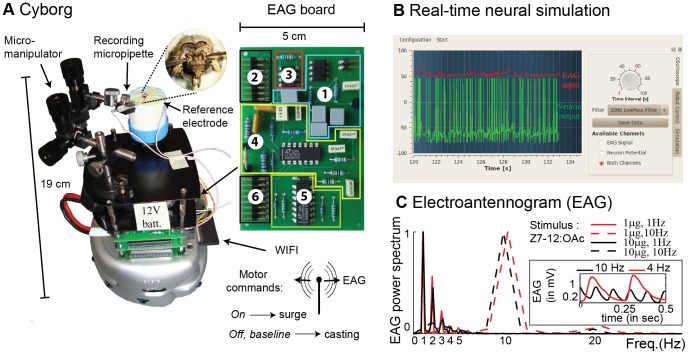Figure 4. Cyborg experiments.
(A) The robotic platform was composed of a tethered moth A. ipsilon mounted on a Khepera III robot. The EAG acquisition board consisted of (1) voltage regulation providing ±5 V from a +12 V battery, (2) differential EAG input, (3) instrumentation pre-amplification (INA121, ×10), (4) noise filtering and amplification (0.1–500 Hz frequency band, 50 Hz notch filter, ×25), (5) signal conditioning (0–5 V) and (6) analog-to-digital conversion (8 bits, 1 kHz sampling frequency). (B) Graphical user interface in Qt-C++ to visualize both EAG input and neuron output. The neuron simulation was performed in real-time. (C) The whole system was able to resolve pheromone pulses up to 10 Hz, as indicated by the normalized EAG power spectrum for pheromone puffs pulsed at 1 and 10 Hz. Inset: two examples of EAG signals obtained at 4 and 10 Hz.

